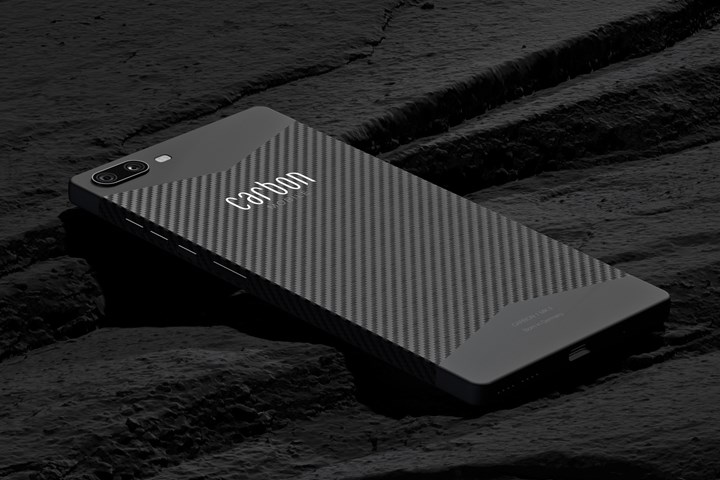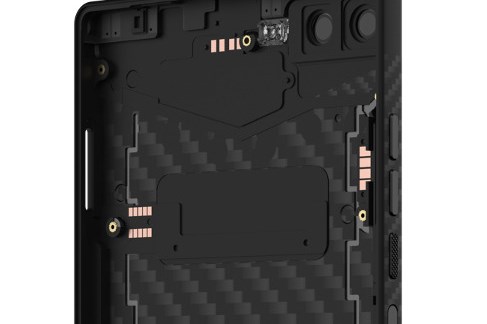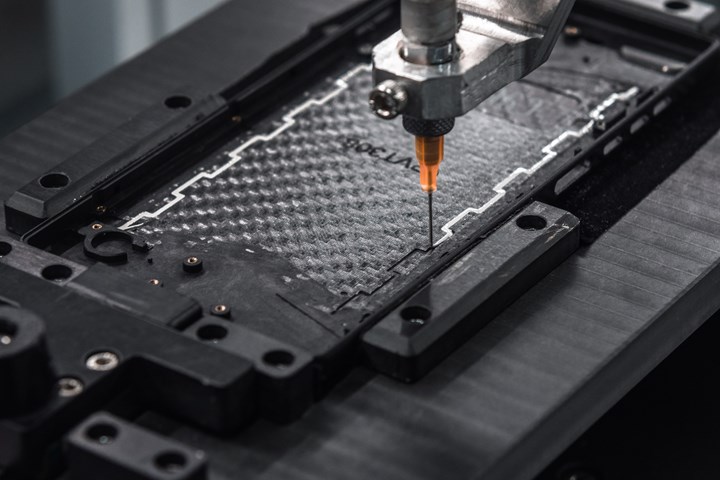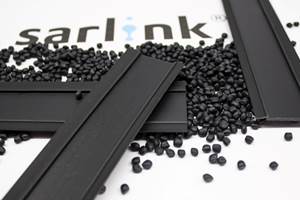‘First’ Carbon Fiber Smartphone Developed by German Startup
Lanxess Tepex dynalite 208 TPU is the matrix material for Carbon Mobile’s ultra-thin and extremely light smartphone.
What is said to be the ‘first’ carbon fiber smartphone that sets new standards for lightness, slim design and sustainability made its debut this March, from Berlin-based startup Carbon Mobile. “Designed and engineered in Germany, the Carbon 1 MK II reignites miniaturization and drives sustainability in connected devices by replacing plastics and aluminum with advanced composite materials for the first time,” says Carbon Mobile’s CEO Firas Khalifeh.
The base material for the production of the housing is a thermoplastic composite from Pittsburgh-based Lanxess’s Tepex dynalite portfolio, specifically Tepex dynalite 208 TPU. It is reinforced with fabrics of incredibly fine 1K continuous carbon fiber filaments. Explained Philipp Genders, Tepex expert in application development at Lanxess. “Our composite material, which we developed for extremely lightweight components subjected to considerable mechanical stress, does more than just allow exceptionally thin wall thicknesses. In fact, with its high degree of strength and rigidity, it also helps to make the housing very robust for day-to-day use,” “In addition, the matte-black carbon-fibers give the smartphone a truly high-tech look.”

Despite their advanced properties for producing robust yet lightweight structures, carbon fibers behave in an electromagnetic shielding manner. This means that they block radio signals, forming a Faraday cage that rather than allowing signals to pass through, instead disperses them around the outer body of the device. Connected devices with carbon fiber, for this reason have been viewed as an impossibility by the tech industry.
After four years of research and development, Carbon Mobile’s engineers have developed a revolutionary process to unlock carbon fiber’s potential for connected devices. The patented HyRecm (Hybrid Radio Enabled Composite Material) technology fuses carbon fibers together with a complementary composite material capable of RF signal permeation. To further boost the devices connectivity, a unique 3D-printed conductive ink is integrated into the carbon fiber structure. The result is the first “radio enabled” carbon fiber based material.
Applied for the first time in the Carbon 1 MK II, the new technology produces a robust carbon fiber-based housing structure that is not only incredibly thin and light, but also made from less than 5% plastic. Said Eric Chan from processing partner Modern Composites Ltd., “Lanxess and their Tepex materials made the perfect partner in the development of HyRecm Technology. Being able to work with a superior material from Germany ensures the best application possible of this revolutionary technology from launch.”

Following the same construction principle as the load-bearing chassis of a Formula 1 car, the housing is designed as a monocoque, or “single shell”. As a result, it makes optimized use of the extreme rigidity of carbon fiber reinforced plastic (CFRP). This contributes significantly to the thin wall thicknesses and low weight of the smartphone and also enables miniaturization. That is because there is no bulky reinforcement taking up space on the inside of the housing. According to Khalifeh, ”Our cutting-edge monocoque design enables a device that weighs only 125 grams, a third lighter than conventional smartphones. At just 6.3 millimeters, it is also 25% thinner as well.”
Working toward a world with less electronic waste, Carbon Mobile is committed to sustainable principles. The new smartphone uses only recyclable materials wherever possible. Said Khalifeh,“We want to deliver our contribution to cutting electronic waste and improving sustainability around the world,” says Khalifeh. The composite material used for the housing can also easily be recycled and repurposed for new uses. Added Genders, “Like all products in the Tepex dynalite product line, it can be shredded and then processed on standard injection-molding machines to make high-quality components, either by itself or mixed with suitable new material.” To extend the service life of the smartphone, all its components are designed to be easily replaceable for repair purpose, which also prevents the creation of electronic waste.

Related Content
Automotive TPVs Formulated with Scrap
Latest addition to Teknor Apex Sarlink is offered with up to 40% post-industrial scrap. Can be extruded or molded.
Read MoreExpanded Line of ‘Super’ Soft TPEs for Medical Devices
Kraiburg TPE has expanded its Thermolast M series of TPE compounds by additional hardness degrees.
Read MoreMedical Grade TPEs for Biopharmaceutical Tubing
Teknor Apex expands its Medalist TPE portfolio.
Read MoreGeneral Polymers Thermoplastics to Further Expand Distribution Business
NPE2024: Following the company’s recent partnership buyout, new North American geographic territories are in its sight.
Read MoreRead Next
Beyond Prototypes: 8 Ways the Plastics Industry Is Using 3D Printing
Plastics processors are finding applications for 3D printing around the plant and across the supply chain. Here are 8 examples to look for at NPE2024.
Read MoreLead the Conversation, Change the Conversation
Coverage of single-use plastics can be both misleading and demoralizing. Here are 10 tips for changing the perception of the plastics industry at your company and in your community.
Read MoreMaking the Circular Economy a Reality
Driven by brand owner demands and new worldwide legislation, the entire supply chain is working toward the shift to circularity, with some evidence the circular economy has already begun.
Read More












